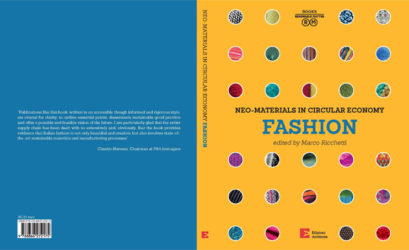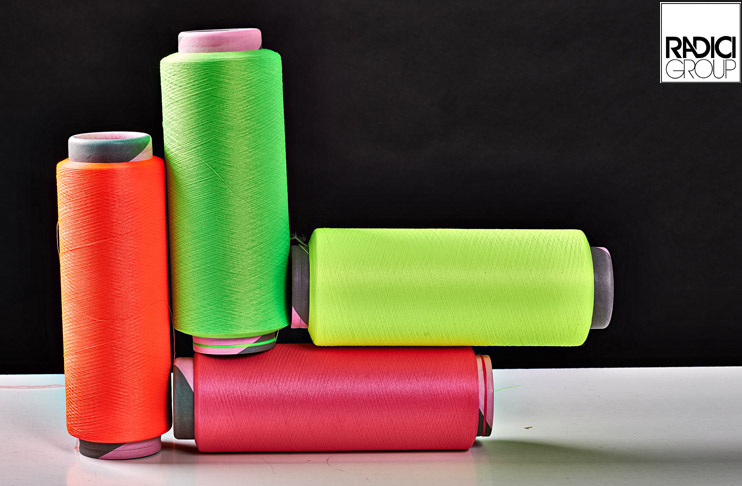In the new book Neo-Materials in the Circular Economy – Fashion, RadiciGroup presents its reduced environmental impact product range. Solution-dyed polyester, recycled polymer polyester and bio-based polyamide are some of the kinds of low environmental impact yarns produced by RadiciGroup specifically for the fashion industry. The fashion world is finally addressing sustainability and looking for materials that are not only beautiful and strong, but also sustainable.
Sustainability and new market requirement
The RadiciGroup product portfolio meeting these new market requirement are described in the recently published book Neo-materials in the Circular Economy – Fashion, available now in bookshops in both Italian and English versions. The book is edited by Marco Ricchetti in collaboration with Blumine Srl and the Italian sustainable fashion social network Sustainability-lab.
The section about the Group, “RadiciGroup and the Future of Synthetic Fibres”; written by Aurora Magni, appears in the first chapter of the book. It can also be read on the RadiciGroup website. Moreover, the book as a whole offers numerous in-depth articles to provide an overall picture of the direction of the fashion industry.
RadiciGroup sustainability report
“RadiciGroup can play a leading role in the fashion value chain as the ideal upstream supplier,” said Oscar Novali, business area manager of RadiciGroup Comfort Fibres. “RadiciGroup has long been well-equipped to satisfy the most diverse market needs for the supply of both small and large quantities of materials. This includes reduced environmental impact products. Over the years, our competence has expanded. We’ve invested in new technologies and up-to-date production plants. That set us apart from our competitors and make sustainability a competitive advantage. 75 years of experience in the fibres industry and vertically integrated polyamide production allow us to claim that we’re one of the best-qualified producers on the market.”
Mr. Novali concluded; ”Furthermore, many of our production units are already ISO 14001-certified or soon will be. For over a decade now, we’ve reported on our business activities and published a Group Sustainability Report; aiming for transparency and information sharing with all our stakeholders.”

The book starts from an analysis of materials. It is divided into three large areas (renewable, nonrenewable and recyclable). Then discusses topics, such as fibre sustainability, water usage and the use of chemicals. And concludes with an overview of the sustainability initiatives promoted by brands, both big and small.
Sustainability and raw materials
Aurora Magni, president of Blumine Srl.; “Raw materials have a decisive impact on the degree of sustainability of the final products”. “In recent years, many fibre manufacturers have invested in research and experimentation. In order to realize aesthetically attractive, high performance products that are consistent with the sustainable values of the circular economy.”
Together with product innovation, it is also important to implement monitoring; checking procedures in order to weigh the CO2 emissions of the various materials. And opt for those resulting in the least environmental impact. This is the approach RadiciGroup has chosen, with the firm belief: ‘if you don’t measure it, you can’t improve it’.”

